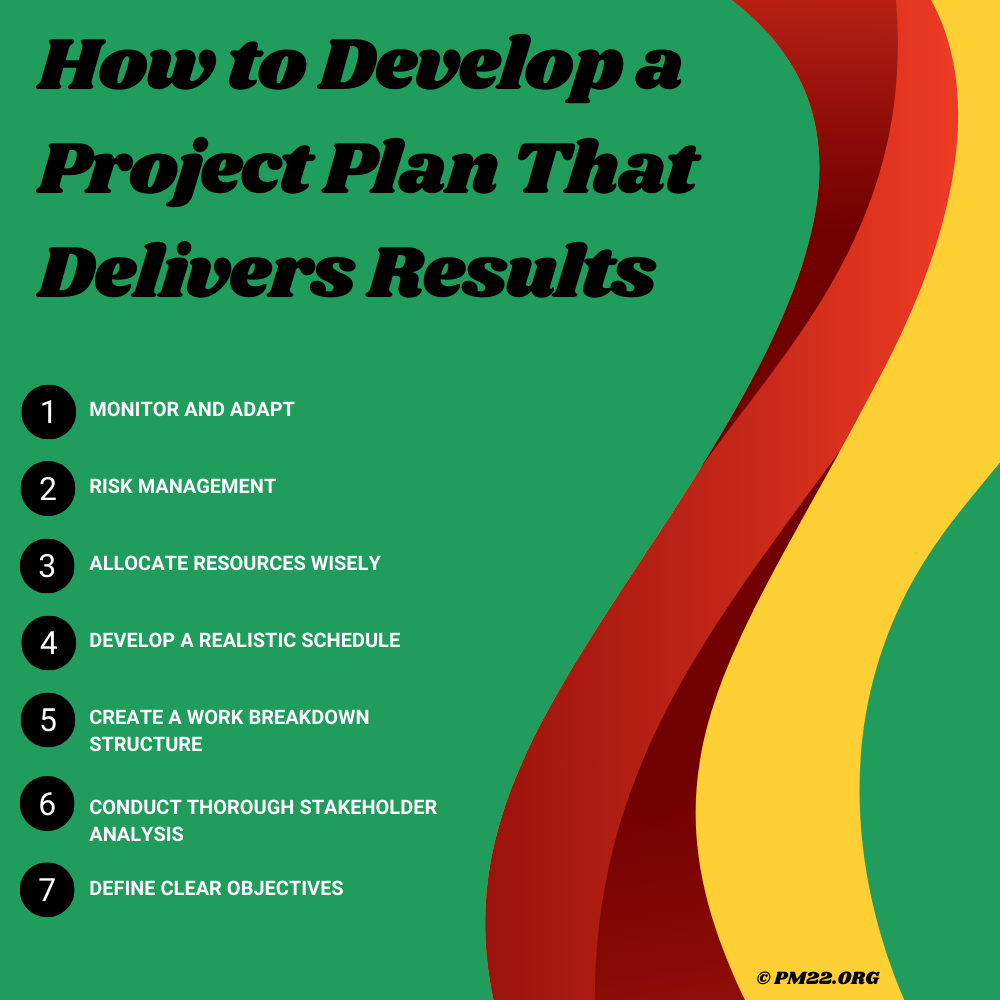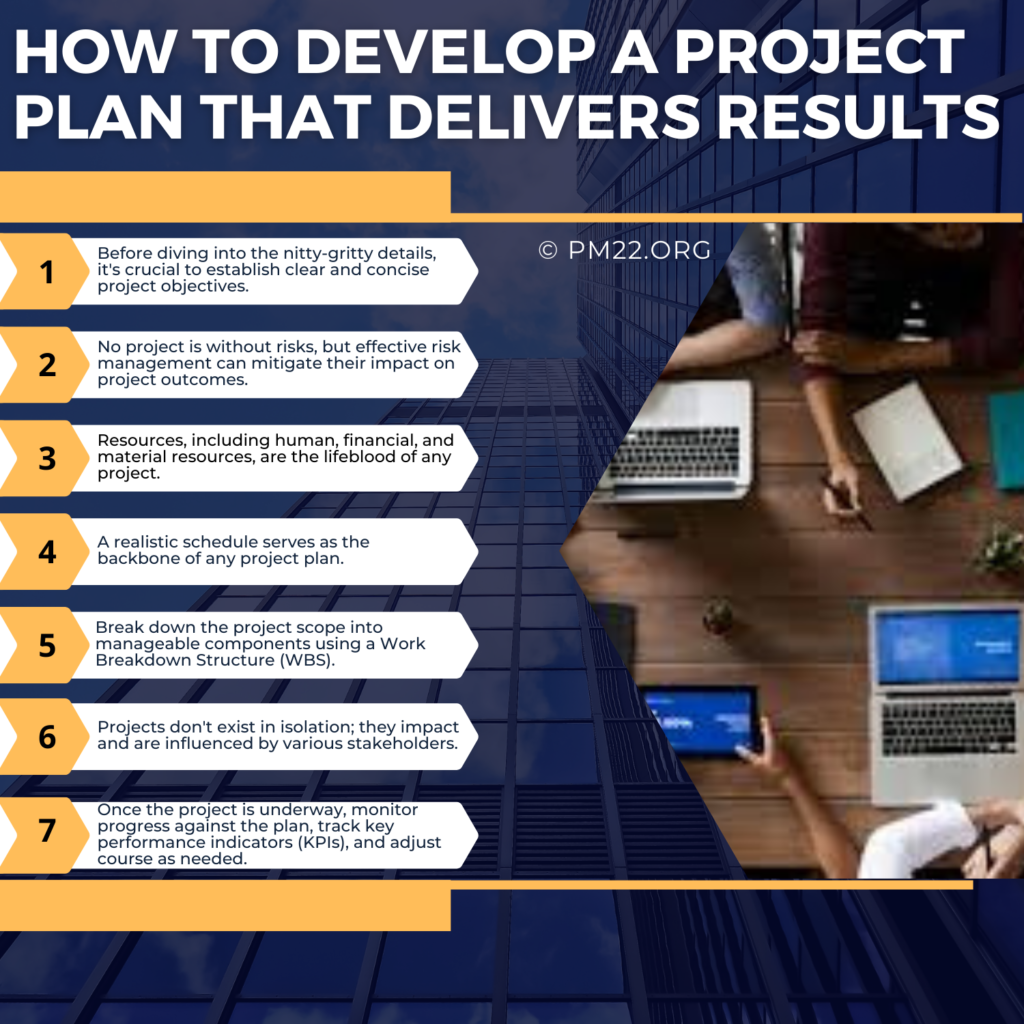 In the realm of project management, success isn’t merely measured by the completion of tasks or adherence to schedules; it’s defined by delivering tangible results that align with organizational objectives. A well-crafted project plan serves as the guiding compass on this journey, navigating through complexities and uncertainties to reach the desired destination. Here’s how to develop a project plan that not only charts the course but also ensures the delivery of impactful results.
In the realm of project management, success isn’t merely measured by the completion of tasks or adherence to schedules; it’s defined by delivering tangible results that align with organizational objectives. A well-crafted project plan serves as the guiding compass on this journey, navigating through complexities and uncertainties to reach the desired destination. Here’s how to develop a project plan that not only charts the course but also ensures the delivery of impactful results.
- Define Clear Objectives: Before diving into the nitty-gritty details, it’s crucial to establish clear and concise project objectives. These objectives should be SMART (Specific, Measurable, Achievable, Relevant, Time-bound) and aligned with the overarching goals of the organization. By defining what success looks like from the outset, you lay the foundation for a focused and purpose-driven project plan.
CLICK HERE TO DOWNLOAD 300+ PROJECT MANAGEMENT TEMPLATES & DOCUMENTS IN EXCEL
- Conduct Thorough Stakeholder Analysis: Projects don’t exist in isolation; they impact and are influenced by various stakeholders. Conducting a thorough stakeholder analysis helps identify key stakeholders, understand their expectations, concerns, and level of influence, and engage them throughout the project lifecycle. By actively involving stakeholders, you increase buy-in, mitigate resistance, and foster collaboration, ultimately enhancing the likelihood of delivering results that meet stakeholders’ needs.

- Create a Work Breakdown Structure (WBS): Break down the project scope into manageable components using a Work Breakdown Structure (WBS). This hierarchical decomposition organizes tasks into smaller, more manageable units, allowing for better planning, estimation, and resource allocation. By breaking the project down into bite-sized chunks, you make it easier to track progress, identify dependencies, and allocate resources effectively, thus enhancing the project’s overall efficiency and effectiveness.
- Develop a Realistic Schedule: A realistic schedule serves as the backbone of any project plan. Utilize project management tools and techniques such as Gantt charts, critical path analysis, and resource leveling to develop a comprehensive project schedule. Ensure that the schedule accounts for dependencies, constraints, and potential risks, while also allowing for flexibility to accommodate changes and unforeseen circumstances. By setting realistic deadlines and milestones, you provide a roadmap for progress and enable timely course corrections, thereby enhancing the project’s chances of success.

- Allocate Resources Wisely: Resources, including human, financial, and material resources, are the lifeblood of any project. Allocate resources judiciously based on the project requirements, skillsets of team members, and availability of resources. Consider factors such as resource constraints, availability, and competencies when making resource allocation decisions. By optimizing resource utilization and ensuring the right people are assigned to the right tasks, you enhance productivity, minimize bottlenecks, and increase the likelihood of achieving project objectives.
CLICK HERE TO DOWNLOAD 300+ PROJECT MANAGEMENT TEMPLATES & DOCUMENTS IN EXCEL
- Risk Management: No project is without risks, but effective risk management can mitigate their impact on project outcomes. Identify potential risks, assess their likelihood and impact, and develop risk mitigation strategies to address them proactively. Incorporate risk management activities into the project plan, allocate contingency reserves, and establish a risk management framework to monitor and control risks throughout the project lifecycle. By anticipating and addressing risks before they escalate, you safeguard the project’s success and increase its resilience in the face of uncertainties.

- Monitor and Adapt: Once the project is underway, monitor progress against the plan, track key performance indicators (KPIs), and adjust course as needed. Regularly review and update the project plan to reflect changes in scope, schedule, or resource allocation. Leverage project management tools and techniques to facilitate communication, collaboration, and decision-making among team members. By maintaining vigilance and agility, you ensure that the project stays on track and delivers the intended results.
In conclusion, developing a project plan that delivers results requires careful planning, proactive management, and continuous adaptation. By defining clear objectives, engaging stakeholders, breaking down the work, creating realistic schedules, allocating resources wisely, managing risks, and monitoring progress, you can increase the likelihood of success and ensure that your project delivers tangible results that align with organizational goals.
